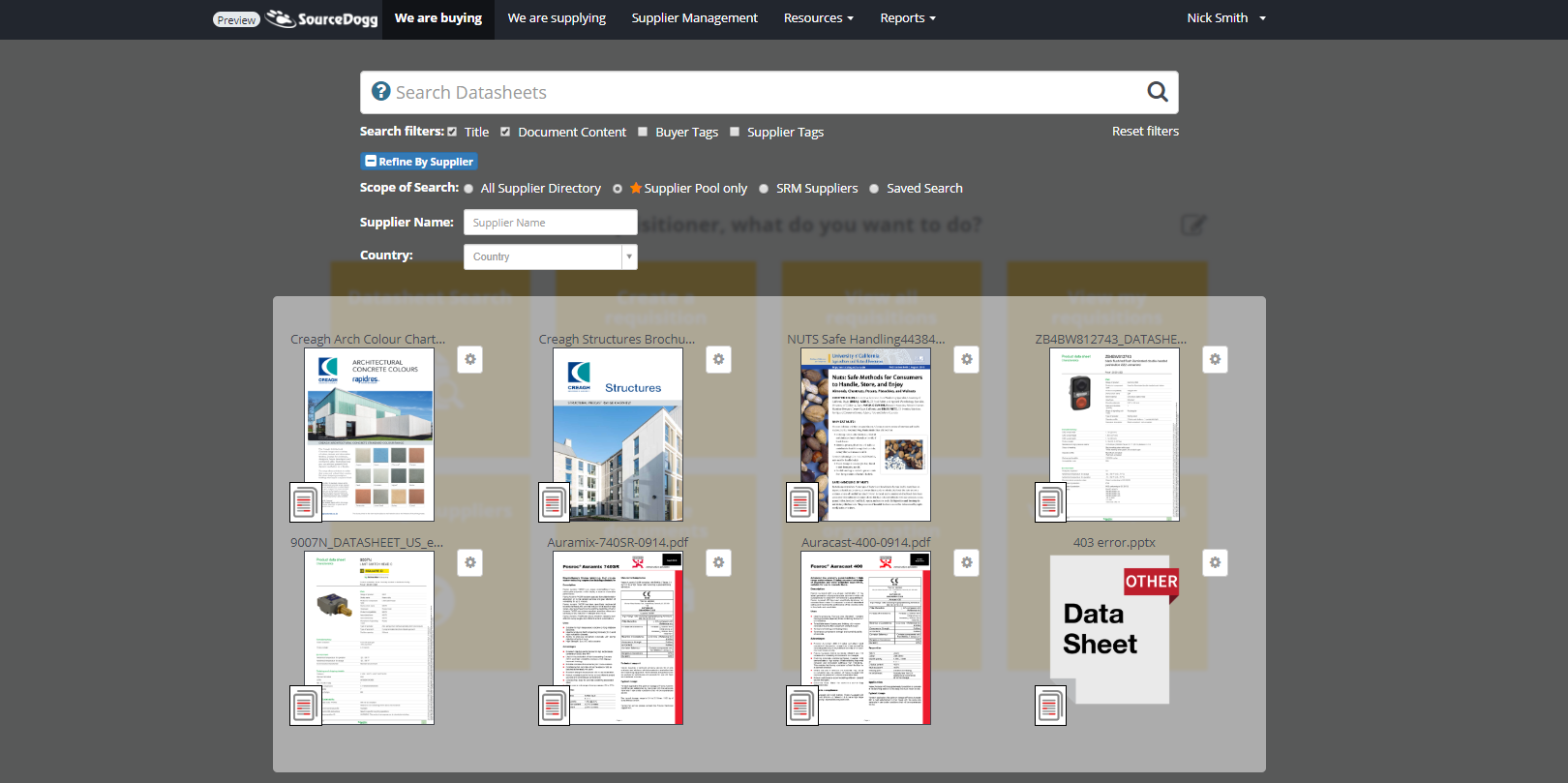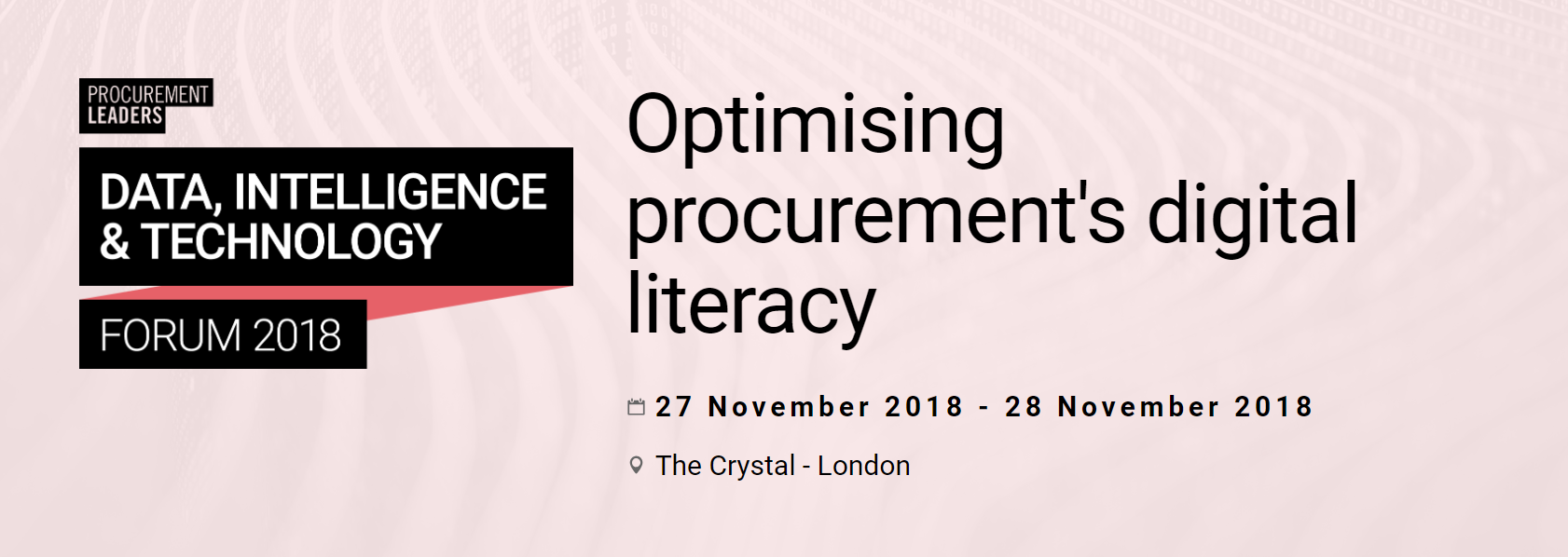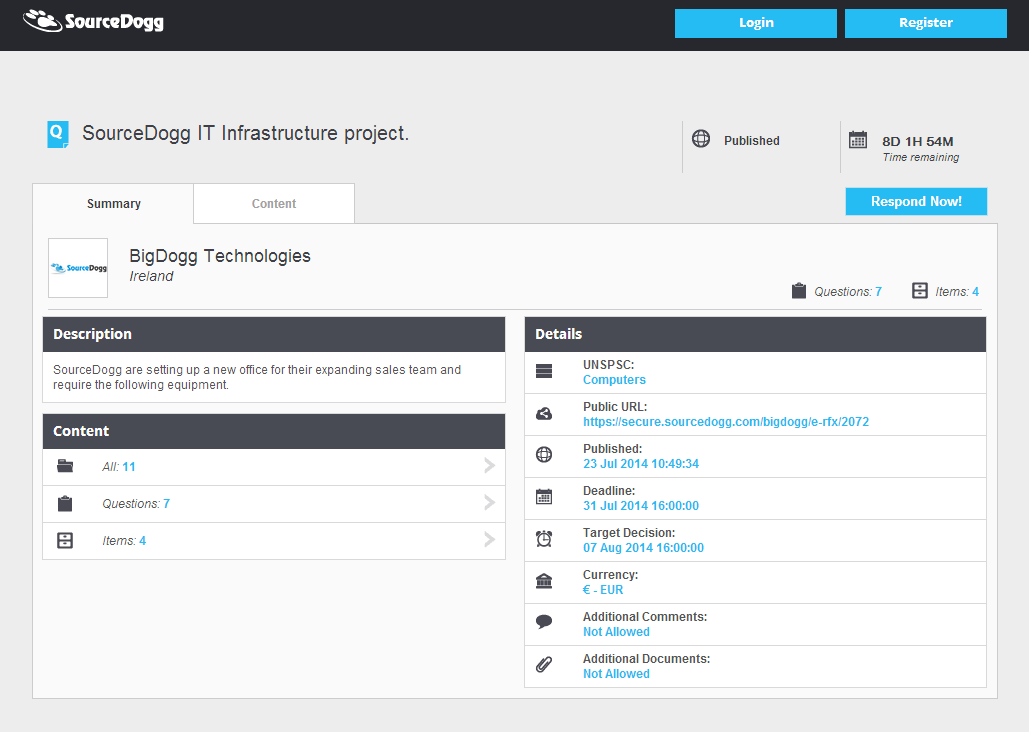Increase your visibility
It is important to make your company stand out. When buyers are searching through the SourceDogg database for suppliers they can have a look at your supplier profile to perhaps get a better understanding of what your company offers. To make the most of this its vital that you populate your profile with key information. Your SourceDogg profile allows you to display a company logo and an overview where you can give prospective new customers a summary of what you can offer them. Be brief but comprehensive. Let them know what makes you stand out from the crowd. You can also include some contact information so if they want more information they have some contact points.
Click here for help on how to update your profile.
Ensure your certification is up to date
Where once having certifications was seen as having a competitive advantage, now its being seen more as an absolute necessity. It gives buyers a sense of confidence and security that your organisation has the knowledge and talent required and is prepared to handle their needs now and in the future. SourceDogg allows you to display those hard-earned certifications and accreditations to make your organisation more appealing to work with. Keeping those certifications up to date on SourceDogg is equally important and because of that we will send you periodic reminders when they are due for renewal. Properly maintained and accurate list of key certifications on SourceDogg will show potential buyers that your company is highly professional and provide products or services of the highest quality.
Click here for help on how to update your certifications.
Upload your Datasheets
A Datasheet is a document that provides the details and specifications of your product range and, used correctly, can do a lot of your sales work for you. Buyers are using SourceDogg to find suppliers that provide the products or service they are looking for. They can search through the SourceDogg database of datasheets and then if they like what they see they can then invite that supplier to a Request for Quotation (RFQ) and ask for more details or pricing. You can now upload your datasheets, spec sheets, pricelists, risk assessments, PPE assessments or any other sales paraphernalia to SourceDogg. These documents can then be shared with selected buyers or made publicly available to all buyers.
Click here for more information on our Datasheets.
Make yourself a preferred supplier
Find out if the buyers you know on SourceDogg are running a Supplier Onboarding event and ask if you can take part in it. Many buyers are using SourceDogg to gather information from their suppliers and to add them to preferred supplier lists, or ‘supplier pools’. Getting into these pools will increase your chances of being invited to future tenders they may publish. Many SourceDogg buyers are running the new supplier applications publicly so you might consider applying for these. You could find these in the Public Requests area of your account.
Keep your ear to the ground
Although most tenders on SourceDogg are private and by invitation only, there are also some published publicly. By checking the Public Requests area on SourceDogg periodically you can ensure nothing relevant will pass you by. We also recommend to register on Contracts Finder and Tender Electronics Daily websites as many of SourceDogg buyers are government organisations such as councils and hospitals and you can set up for any notifications to be sent to you when a new tender is published.











